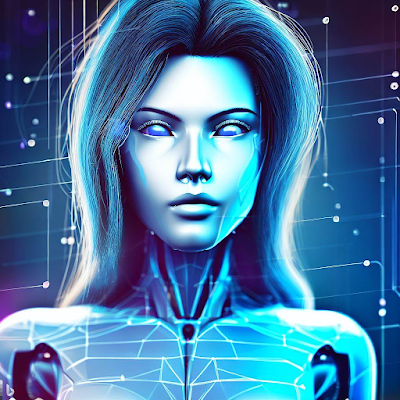AI in May 2023: The Good, the Bad and the Ugly
Artificial intelligence (AI) is transforming the world in unprecedented ways, creating new opportunities and challenges for humanity. In May 2023, we witnessed some of the most remarkable and alarming examples of how AI can be used for good or evil. Here are some of the highlights:
Read: How AI Will Impact Industry Verticals in 2023: A Comprehensive Guide
- The Good: AI for Responsible and Collaborative Research. The US government updated its national AI strategy and called for public input on how to advance responsible and ethical AI research, development and deployment. The update emphasized a "principled and coordinated approach to international collaboration in AI research" and a commitment to the long-term investment in fundamental and responsible AI research. This initiative reflects the growing awareness and importance of ensuring that AI is aligned with human values and serves the public interest.
- The Bad: AI for Faking and Spreading Disinformation. A false report of an explosion at the Pentagon, accompanied by an apparently AI-generated image, spread on Twitter on Monday morning, sparking a brief dip in the stock market. The image was likely generated by artificial intelligence, experts said, in an example of potential for misuse of the increasingly popular and prevalent technology that they have been worried about. Soon, other apparently fake AI images purporting to show an explosion at the White House popped up. Many of the Twitter accounts that spread the hoax carried blue checks, which used to signify that the social network had verified the account is who or what it claims to be. But under new owner Elon Musk, the company now gives a blue check to any account that pays for a monthly Twitter Blue subscription. This incident shows how AI can be used to create and disseminate false and harmful information that can manipulate public opinion and undermine trust.
- The Ugly: AI for Exploiting and Harming Vulnerable Populations. A report by Human Rights Watch revealed that China has been using facial recognition and other AI technologies to monitor and oppress ethnic minorities in Xinjiang, a region where more than one million Uyghurs and other Muslims have been detained in internment camps. The report documented how China has deployed a mass surveillance system that collects biometric data, tracks movements, analyzes behavior and flags "suspicious" individuals for further scrutiny. The report also exposed how China has been exporting its AI surveillance tools and practices to other authoritarian regimes around the world. This case illustrates how AI can be used to violate human rights and dignity on a massive scale.
These stories demonstrate the diverse and powerful impacts of AI on society and the need for more awareness, regulation and accountability to ensure that AI is used for good and not evil.
Takeaways from this story are:
- AI is a double-edged sword that can create both opportunities and challenges for humanity.
- AI can be used for responsible and collaborative research that advances human knowledge and well-being.
- AI can also be used for faking and spreading disinformation that can manipulate public opinion and undermine trust.
- AI can also be used for exploiting and harming vulnerable populations that can violate human rights and dignity.
- There is a need for more awareness, regulation and accountability to ensure that AI is aligned with human values and serves the public interest.

0 Comments